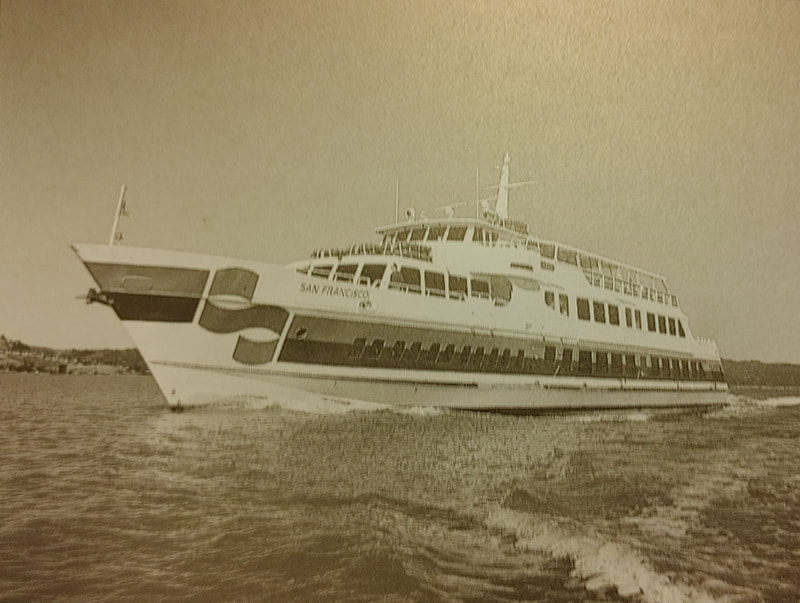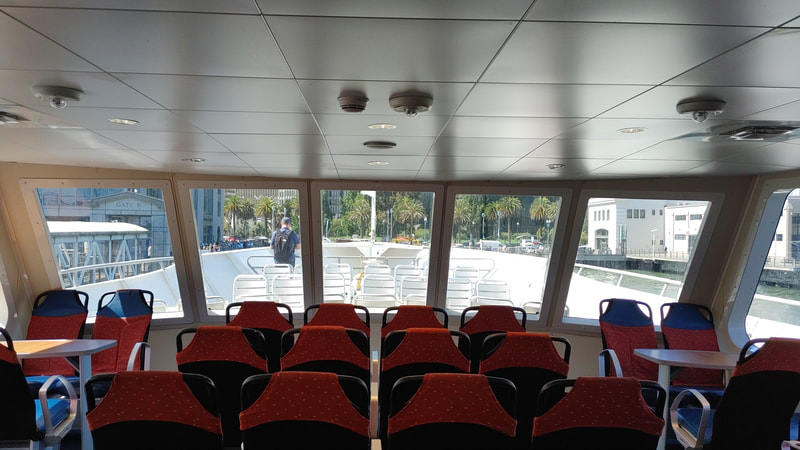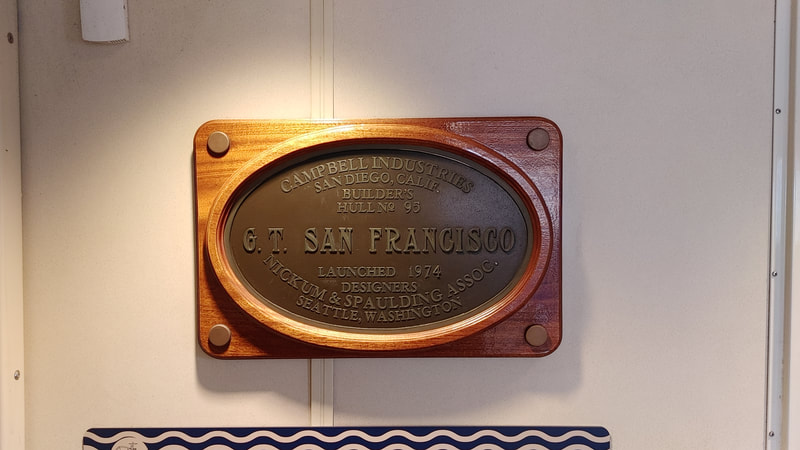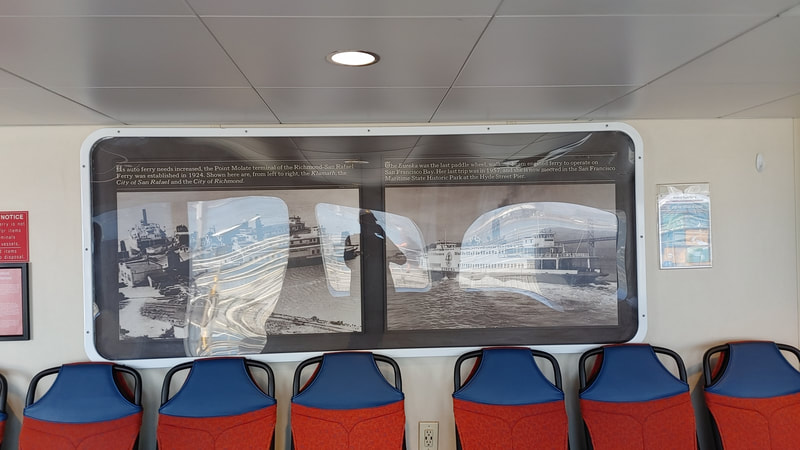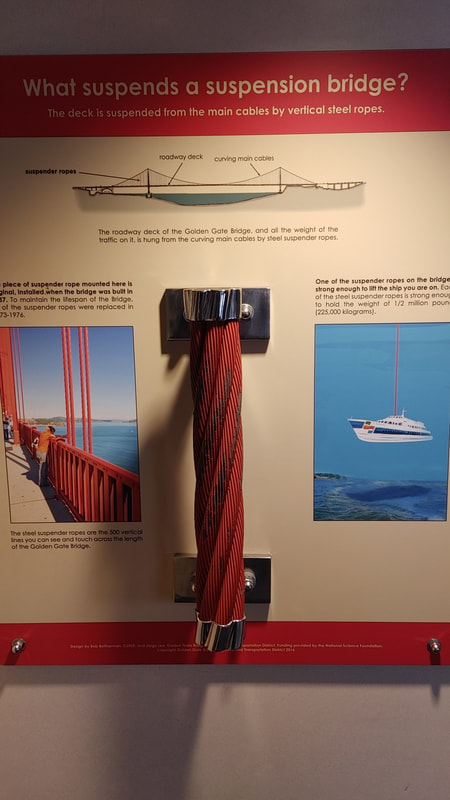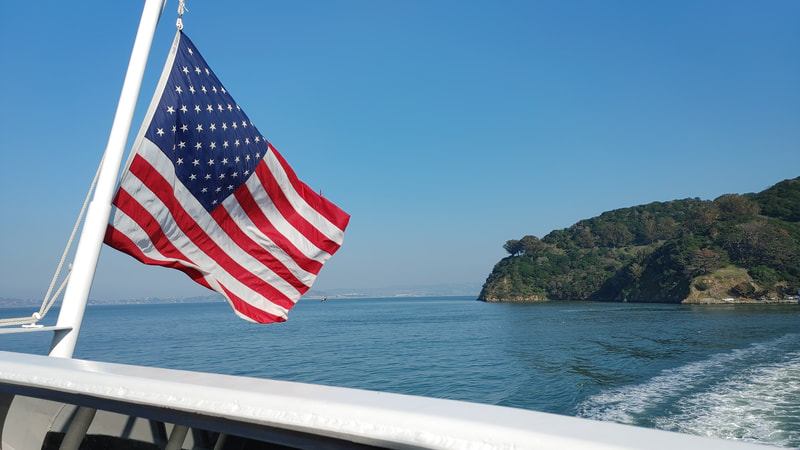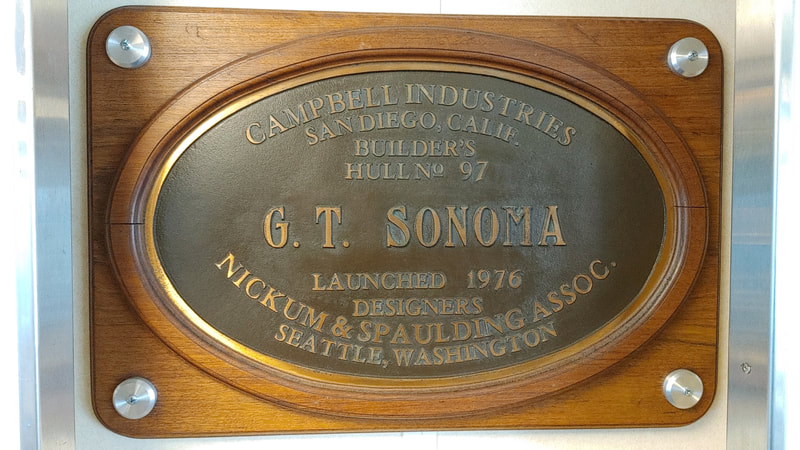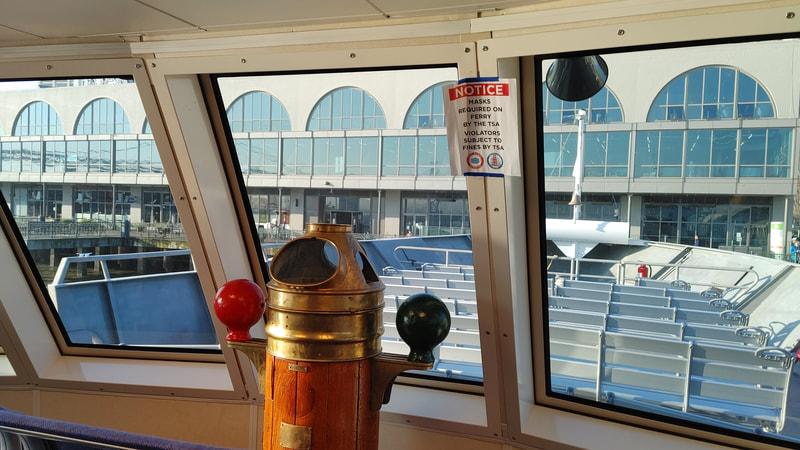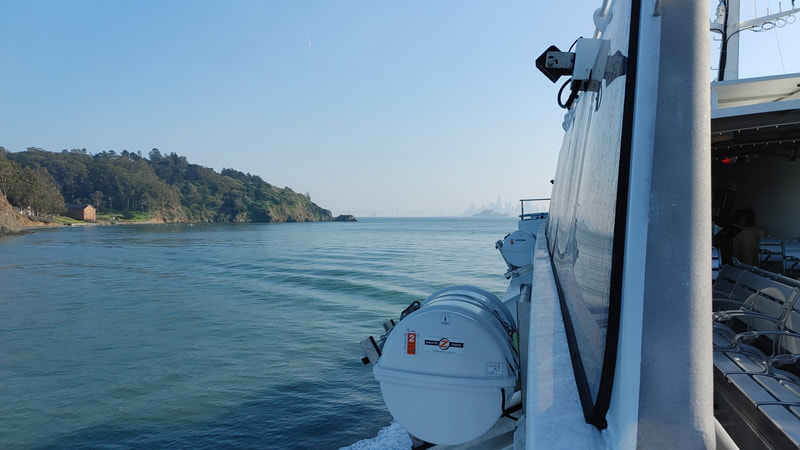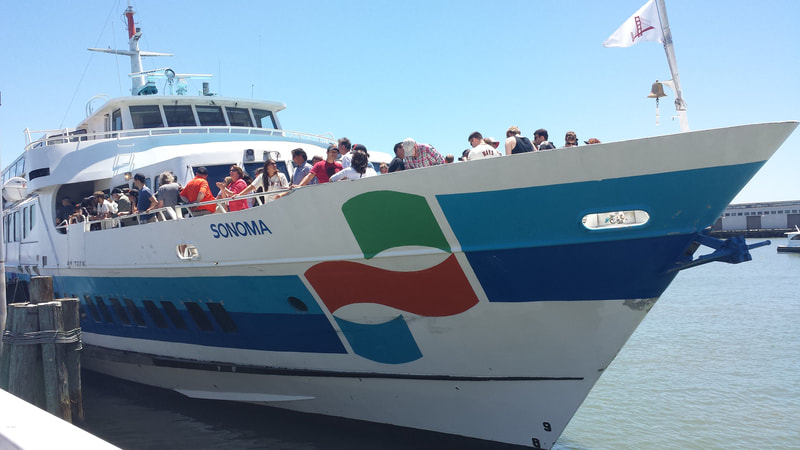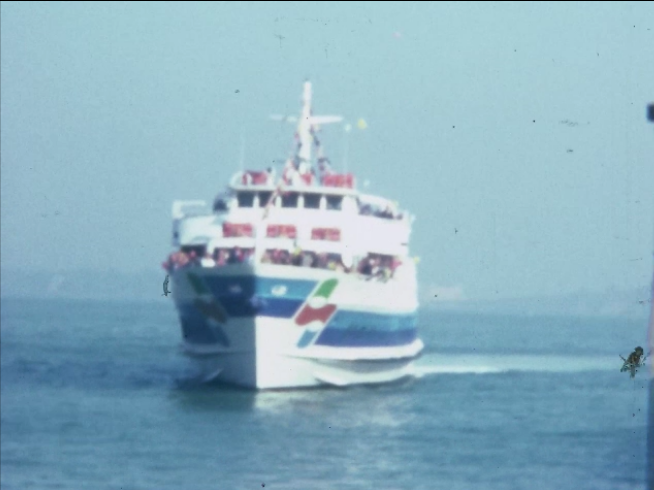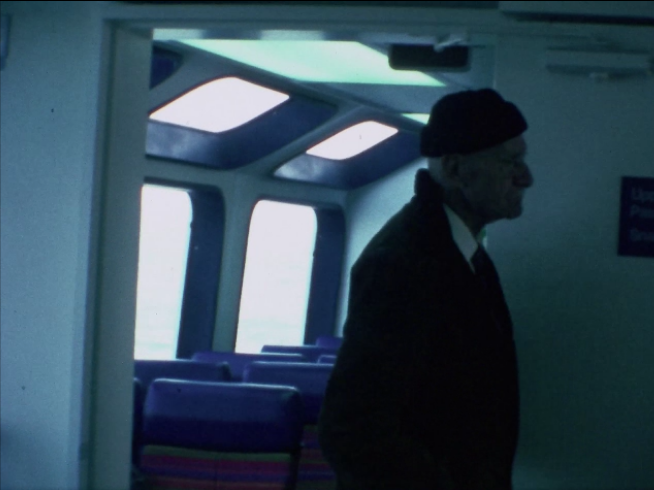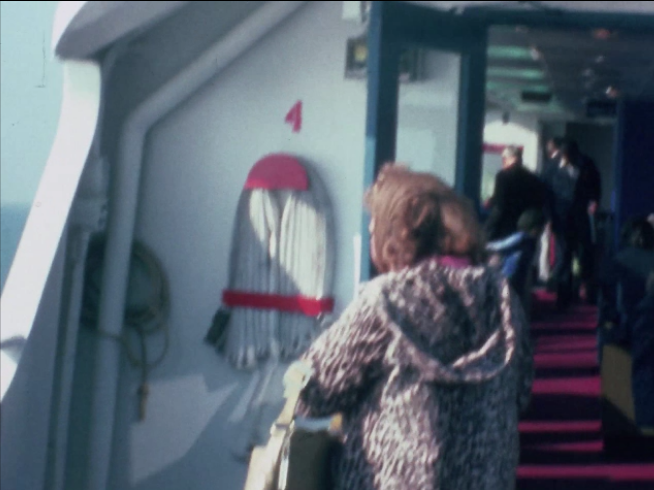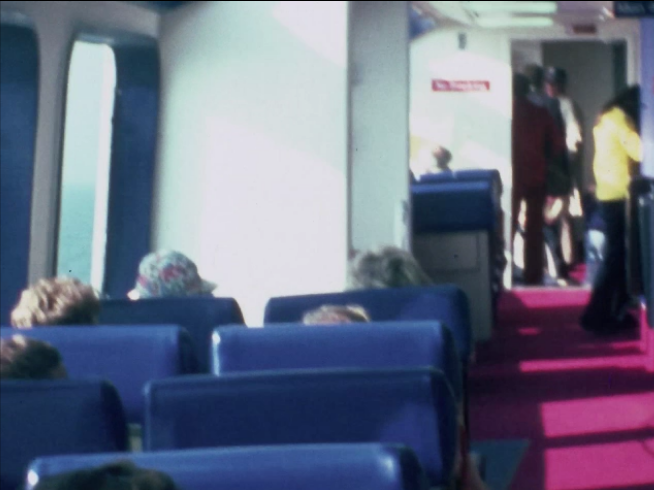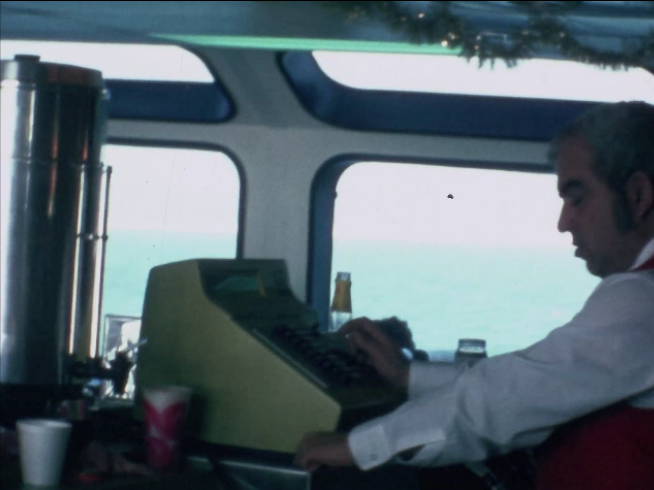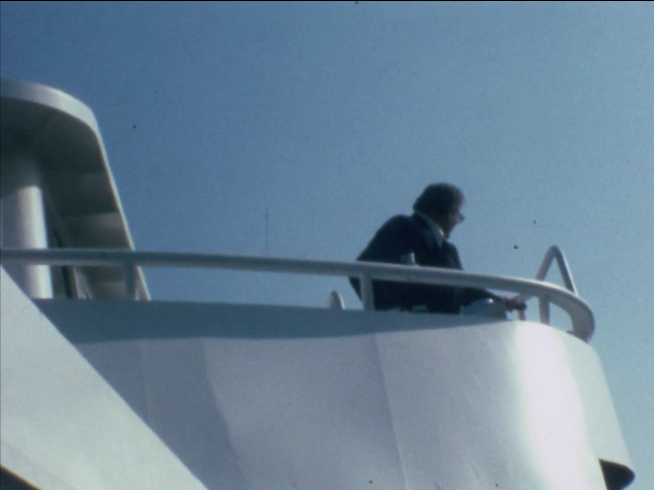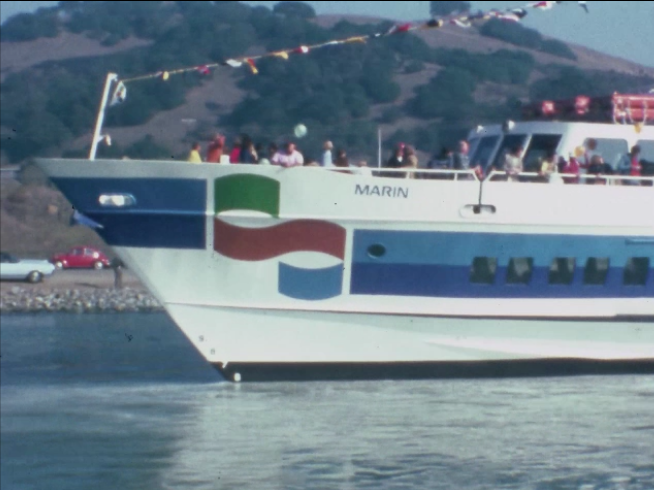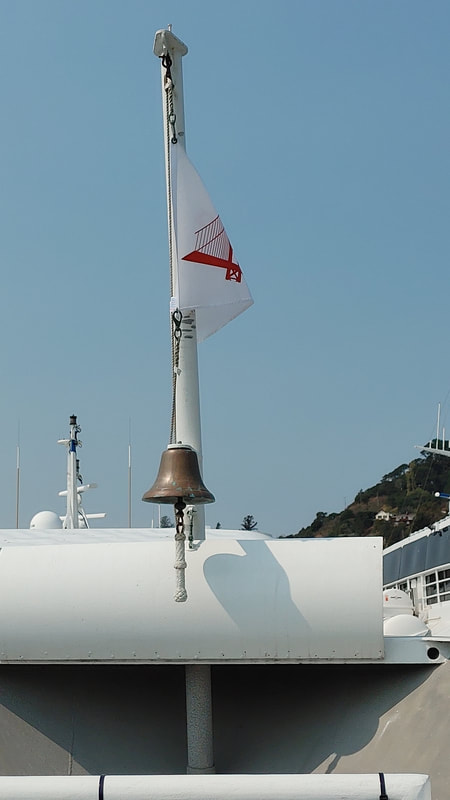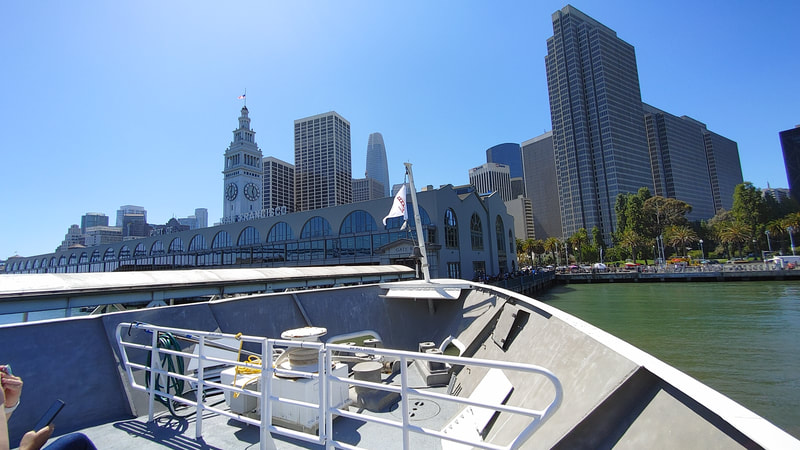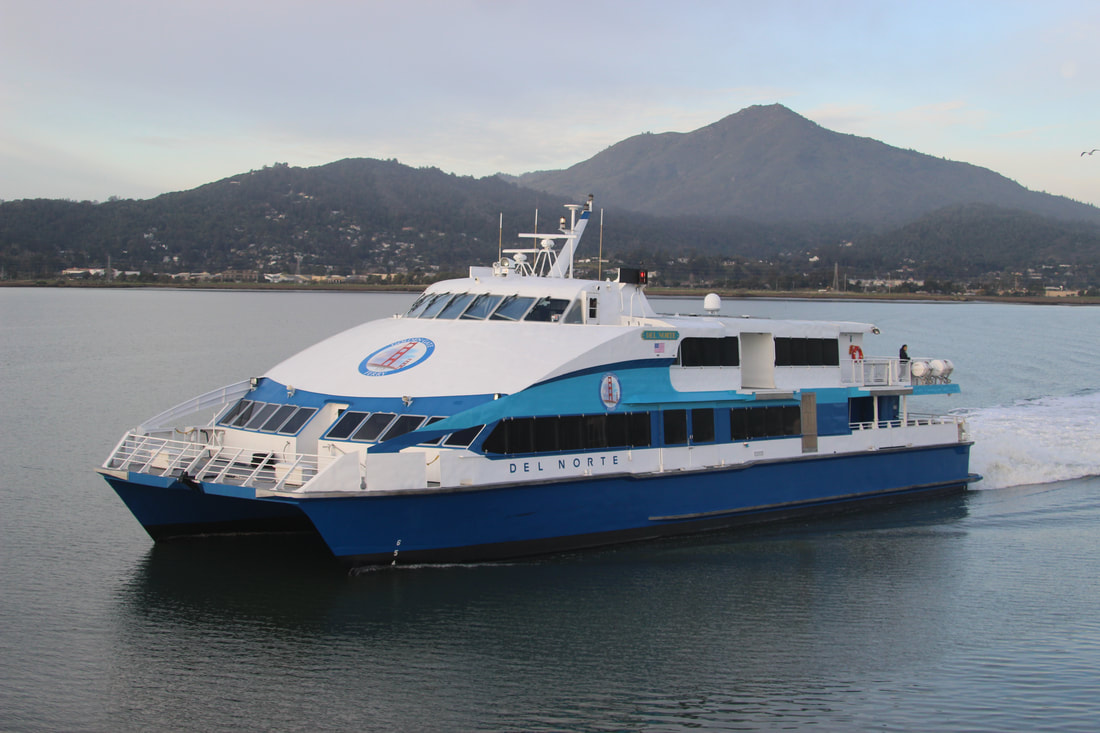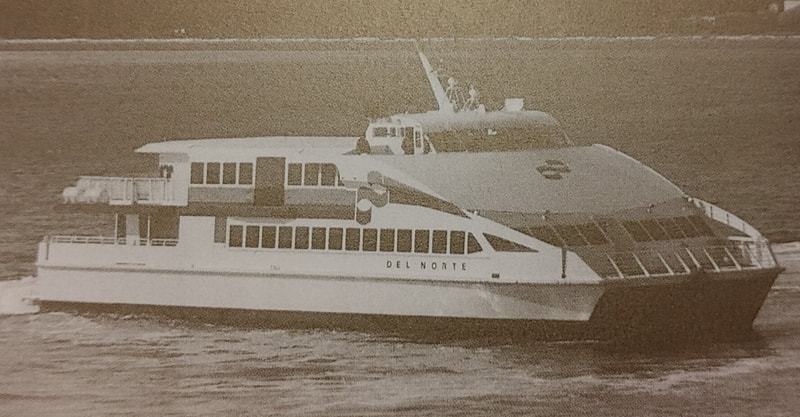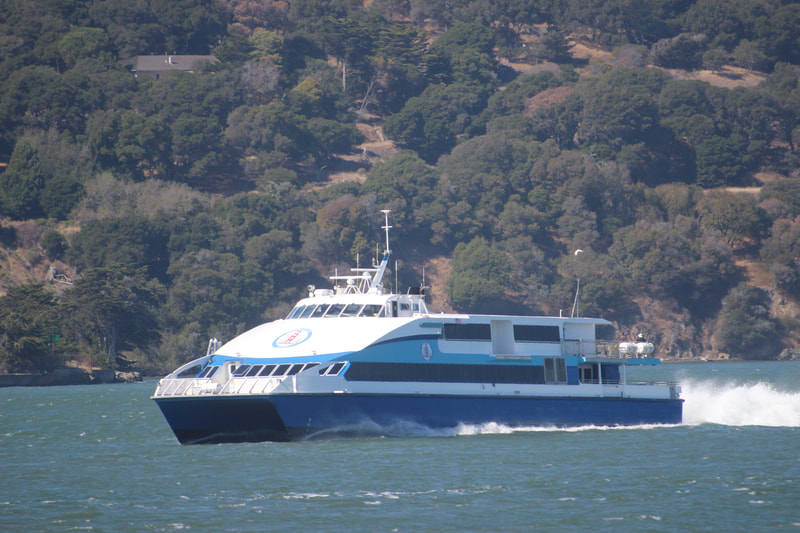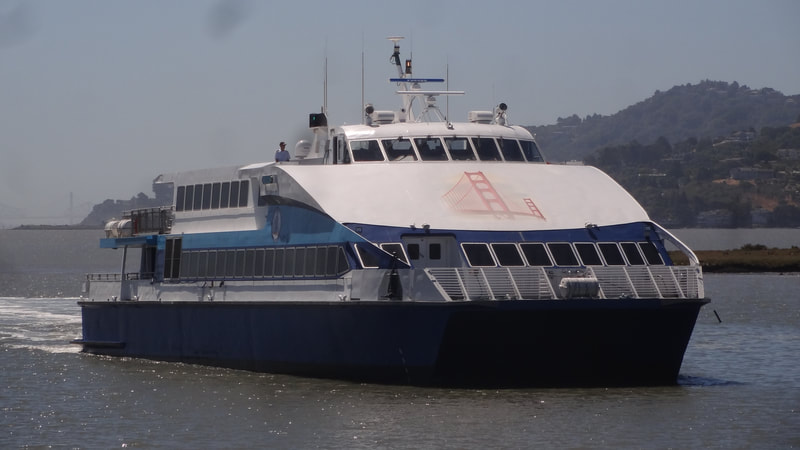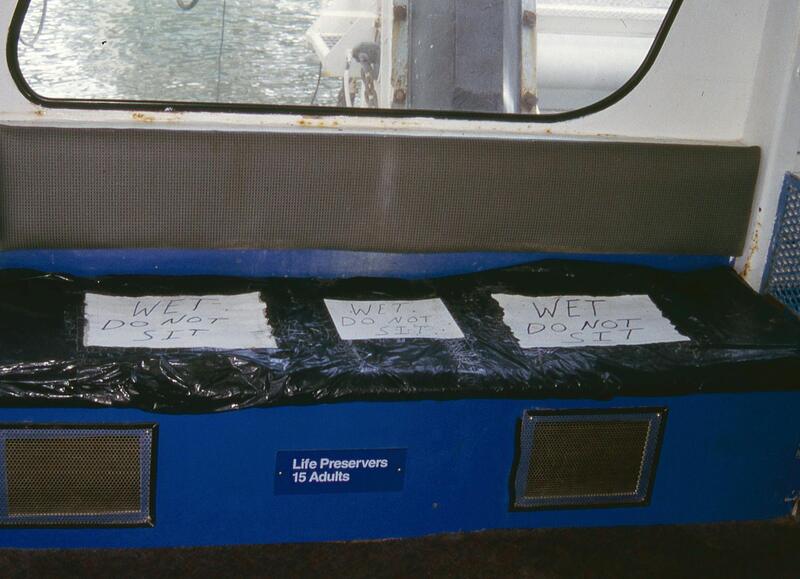Golden Gate Ferry
Since 1970, the Golden Gate Bridge, Highway and Transportation District, has operated ferry service from Marin County to San Francisco.
Service consists of three routes: Sausalito, Tiburon, and Larkspur, all to SF.
Visually, the fleet is composed of three broad types: the Spaulding Class, the AMD Designed/Dakota Creek built catamarans, and the sole Mendocino.
One boat, the first Golden Gate was retired, and the leased Millennium of Rhode Island was returned after the expiration of its lease in 2020.
Service consists of three routes: Sausalito, Tiburon, and Larkspur, all to SF.
Visually, the fleet is composed of three broad types: the Spaulding Class, the AMD Designed/Dakota Creek built catamarans, and the sole Mendocino.
One boat, the first Golden Gate was retired, and the leased Millennium of Rhode Island was returned after the expiration of its lease in 2020.
Routes
|
Sausalito - San Francisco
Crossing Time: 30 minutes Distance: 5.5 nautical miles (6.33 statute miles) History: Service started on Saturday, August 15, 1970 using the MV Golden Gate (I). On March 26, 2004, the MV Golden Gate was retired after carrying 21 million passengers over 432,108 round trips. Since then, it is typically served by a Spaulding Class, with substitutions with Del Norte and Mendocino as needed. Larkspur - San Francisco Crossing Time: 40-50 min (G.T. Spaulding), 55-60 min (M.S. Spaulding), 35 min (Catamaran) Distance: 11.25 nautical miles or 12.95 statute miles Philip F. Spaulding and Associates produced a report for the District outlining the Larkspur route in 1970, and designed the boats for said route (named the "Spaulding Class"). The location of the terminal was guided by the goal of attracting the auto commuter. Service began on Monday, December 13, 1976, using the G.T. Marin. Catamaran ferries were added in the late 90s through 2010s, supplementing and eventually replacing the Spaulding class during weekdays. Now, the "cats" operate on the route during weekdays, while the Spauldings operate on the weekends. Spauldings are also typically used on game day matches and special event runs. Tiburon - San Francisco Service began on Monday, March 6, 2017, replacing the former Blue & Gold tourist operator (commuter-oriented) service. It is typically served by a Spaulding Class, with substitutions with Del Norte and Mendocino as needed. Angel Island - San Francisco Angel Island service began in December 13, 2021, replacing Blue & Gold Fleet service to the island. GGF provides service to Angel Island (State Park) via interlining with the Sausalito and Larkspur runs. |
Fleet
Spaulding Class: San Francisco, Sonoma, Marin
|
The Spaulding class are a group of three vessels originally designed for the Larkspur - San Francisco route by Philip F. Spaulding and Associates, and built by Campbell Industries of San Diego. The location of the Larkspur Ferry Terminal necessitated a fast (at the time) ferry in order to compete with the automobile. To reach this speed, of 25 knots, the boats were designed with Aluminum hulls, gas turbine engines (vessel prefix G.T.), waterjet propulsion, and attractive and comfortable interiors. In some respects, they were akin to the BART car in terms of technological advances in their fields (aluminum hull/carbody, novel propulsion systems, and comfortable interiors).
In the mid 80s, all three boats replaced their gas turbine engines (3 x Lycoming TF35) with diesel engines, cutting fuel costs by 60% and maintenance costs by $300,000 every year. On November 17, 1985, they were rechristened Motor Ships (M.S. prefix). Again, in 2001-2002, all three boats received new engines (2 x Detroit Diesel 16V149). In the 2010s, all three boats were rebuilt with new engines (2 x Detroit Diesel/MTU 12V4000 M60), interiors, electronics, and navigation systems. Even today, the Spauldings have the highest capacity of the entire fleet - up to 750 passengers, compared to the 400-450 passenger capacity of the cats. Thus, they are a common sight on the game day/special event runs. Most fittingly, the Spauldings interiors feature a large collection of historical photos and ephemera of the olden days in Marin County and the bygone days of ferryboats on the Bay. Details: Passenger Capacity: 630-750 Bike Capacity: 150+ Service Speed: As built: 25 knots Present: 20.5 knots Began Service: 1976/1977 Construction Cost: $3.2 million Designer: Philip F. Spaulding and Associates, Seattle, WA Builder: Campell Industries Engines: 1976-1985: 3 x Lycoming TF35 gas turbines1985-2002: 2 x Detroit Diesel 16V149 2002 to present: 2 x Detroit Diesel/MTU 12V4000 M60 Propulsion Type: 1976-1985: Jacuzzi waterjets 1985 to present: fixed pitch propellers |
M.S. San Francisco
|
The last Spaulding Class vessel delievered was the G.T. San Francisco. Launched in 1974, she was finally delivered to Larkspur on September 12, 1977.
She was the first of the trio to be converted to diesel power, and underwent said conversion from December 1983 to 1984. She re-entered service on December 24, 1984. In 2013, San Francisco was rebuilt by Marine Group Boat Works, LLC in San Diego. The rebuilding focused on her interior, piping, electrical systems, control systems, and propulsion. She now wears a unique livery, different from the other Spauldings. |
Photo gallery: Click the thumbnails below to view the full size image.
M.S. Sonoma
|
Sonoma is named after Sonoma County. Sonoma was launched on May 22, 1976, delivered in December 1976, and entered service on the Larkspur route on March 7, 1977. She was the last of the trio to be converted to diesel power, and underwent said conversion in June 1985. She received new Tier 2 marine generators in June 2013.
In 2020-2021, she was completely rebuilt by Nichols Brothers Boat Builders, in a rebuilding which included a new interior, piping, electrical systems, control systems, and propulsion. Redelivered on March 13, 2021, she can last up to 25 more years in service. |
Photo gallery: Click the thumbnails below to view the full size image.
M.S. Marin
|
The Marin is named after Marin County. She was launched on April 10, 1976, and was the first of the Spaulding Class to enter service, on December 11, 1976.
She was the second boat of the trio to be converted to diesel power, and underwent said conversion between January and May 1985. She returned to service in June 1985. From November 2006 to July 2007, she was refurbished by Bay Ship & Yacht Company of Alameda. In the 2013-2014 winter, Marin had her engines rebuilt and new doors installed. In May 2018, her engines and exhaust system were overhauled, allowing for at least another decade in service. |
Photo gallery: Click the thumbnails below to view the full size image.
Catamarans
M.V. Del Norte
|
Built at a cost of $7.8 million, Del Norte was the first catamaran ferry of the Golden Gate Fleet. She was launched on October 30, 1997, and christened in Crescent City, Del Norte County, CA in July 1998. She entered service on September 8, 1998, and introduced a new timetable on the Larkspur route.
Del Norte, the sole vessel of the AMD 360B Class is visually close to the AMD 360A Class (designed for BayLink/SF Bay Ferry - Mare Island and Intintoli), but differs in the doubled number of engines and waterjets. The AMD 360B was designed with 4 x Detroit 16V149 DDEC engines, propelled by 4 x MJP500 waterjets, delivering a service speed of 36 knots, 4 knots faster than the AMD360A Class. From 2009 to 2010, she was repowered with 4 x MTU 12V4000 M60. Throughout her life, she has featured a total of three different liveries (the current livery is ever so slightly different from the WSF boats), alongside various modifications such as the main deck port side doors. The most reliable way to differentiate Del Norte from the former WSF boats is by the center bow door, center bow anchor, and upper deck starboard side door. Details: Passenger Capacity: 400 Bike Capacity: 30 Service Speed: 36 knots Began Service: 1998 Construction Cost: $7.8 million Designer: Advanced Multi-Hull Design, Australia Builder: Dakota Creek Industries, Anacortes, WA Engines: 1998-2010: 4 x Detroit Diesel 16V149 2010 - Present: 4 x MTU 12V4000 M60 Propulsion Type: 4 x waterjets |
Photo gallery: Click the thumbnails below to view the full size image.
M.V. Mendocino
|
Like the distant county she is named after (which is interestingly in the District), the Mendocino is a unique one-off from the rest of the fleet.
Designed by Int’l Catamaran Design and built by Nichols Brothers Boat Builders, "Mendo" shares some lines with the Peralta of the Alameda/Oakland ferry. Built in 2000-2001, she was christened at Noyo Harbor, Fort Bragg, Mendocino County, CA on July 20, 2001. She arrived in the San Francisco Bay two days later, and entered service on September 10, 2001. Like the Peralta, she was returned under warranty to replace her aluminum-alloy hull, from 2002 to 2003. In June 2013, her engines were overhauled, and two years later, she was rebuilt in San Diego. The midlife rebuilding included larger water jets, gear boxes, new livery, and new interior. The Mendo was involved in a rescue of a recreational boat in distress on January 17, 2020. Details: Passenger Capacity: 400 Bike Capacity: 30 Service Speed: 36 knots Began Service: 2000/2001 Construction Cost: $10 million Designer: Int’l Catamaran Design Builder: Nichols Brothers Boat Builders Engines: 2001-2008: Cummins KTA50-M2 2008 to present: MTU 12V4000 M60 Propulsion Type: 4 x waterjets |
Photo gallery: Click the thumbnails below to view the full size image.
AMD385 Class (Ex-Washington State Ferries): Golden Gate, Napa
The pair of AMD385 class vessels were originally built for Washington State Ferries on a planned network of high speed passenger-only ferries from Vashon Island, Bremerton, and Kingston to Seattle. Due to financial and environmental (beach erosion) issues with the new network, the Chinook and Snohomish were deemed surplus and stored mostly inactive since 2003. They were both sold for about $2 million a piece to Golden Gate in January 2009, and underwent a $9.4 million refurbishment a couple years later.
In recent years, the side windows of both boats have been replaced by the frameless type, some bow windows were replaced, and IBA ramps were installed.
Today, the two boats are used on the Larkspur route during the weekdays, and are a familiar sight on the Bay.
And in a weird turn of events, the San Francisco Bay Area has been the home to every Dakota Creek - built fast ferry.
Common Details:
Passenger Capacity:
(As Built) 350
(Current) 450
Bike Capacity: 30
Service Speed: 36 knots
Began Service: 2009, 2011
Cost: $2.2 million, plus rehab cost of $9.4 million
Designer: Advanced Multi-Hull Design, Australia
Builder: Dakota Creek Industries, Anacortes, WA
Engines:
(As Built) 4 x Detroit 16V149 TI DDEC
4 x MTU 12V4000 M60?
Propulsion Type:
(As Built) 4 x MJP500 waterjets
4 x waterjets
In recent years, the side windows of both boats have been replaced by the frameless type, some bow windows were replaced, and IBA ramps were installed.
Today, the two boats are used on the Larkspur route during the weekdays, and are a familiar sight on the Bay.
And in a weird turn of events, the San Francisco Bay Area has been the home to every Dakota Creek - built fast ferry.
Common Details:
Passenger Capacity:
(As Built) 350
(Current) 450
Bike Capacity: 30
Service Speed: 36 knots
Began Service: 2009, 2011
Cost: $2.2 million, plus rehab cost of $9.4 million
Designer: Advanced Multi-Hull Design, Australia
Builder: Dakota Creek Industries, Anacortes, WA
Engines:
(As Built) 4 x Detroit 16V149 TI DDEC
4 x MTU 12V4000 M60?
Propulsion Type:
(As Built) 4 x MJP500 waterjets
4 x waterjets
M.V. Golden Gate
|
The second vessel named Golden Gate started life as the second vessel named Chinook in Puget Sound. Built in 1998, she had a very short service life before being stored in 2003. She was stored with Snohomish at Eagle Harbor, and listed twice on ebay for $4.5 million. After sale to the District in 2009, she was refurbished in Washington from April 2010 to March 2011. She arrived at Larkspur on March 29, 2011, and was officially renamed as the M.V. Golden Gate on June 10th of that year.
Interesting enough, neither vessel named Golden Gate was built for the District. Both were used vessels, but both have had longer, more successful lives in the District than before they were purchased. |
Photo gallery: Click the thumbnails below to view the full size image.
M.V. Napa
|
The Napa started life as the M.V. Snohomish of Washington State Ferries. From 1999 to 2003, she was in service of the WSF system, and was the only one of the pair to have modifications for bow loading. Even today, the bow of Napa looks ever so slightly different from the Golden Gate.
Shortly after sale to the District, on May 28, 2009, she entered service on the Larkspur route, providing relief for the Del Norte's repowering. On June 10, 2009, she was officially renamed M.V. Napa at a ceremony on the Napa River in Napa County. On October 8, 2010, after the Del Norte returned, Napa left service for a planned refurbishment, and returned in 2011. Her waterjets were rebuilt in the winter 2013-2014. |
Photo gallery: Click the thumbnails below to view the full size image.
On Order
Golden Gate Ferry is planning to add one new ferry to the fleet for the Larkspur route.
Retired/Leased
M.V. Golden Gate
|
The original MV Golden Gate was built as the tourist vessel Point Loma in 1969. She was purchased by the District in 1970 ($558,000 for the vessel, and $109,000 for remodeling), and started service on the Sausalito route, an assignment that lasted virtually her entire career. In September 1972, she carried President Nixon on the Bay. In 1990, she was repowered with Caterpillar 3412s. After almost 34 years in service, she was retired on March 26, 2004.
Details: Passenger Capacity: 575 Service Speed: 15 knots Began Service: 1970 Cost: $750,000 Builder: San Diego Marine Construction Company Engines: 1970-1990 2 x Caterpillar D348 1990-2004 2 x Caterpillar 3412 Propulsion Type: Fixed Pitch Propeller Retired: March 26, 2004 |
Photo gallery: Click the thumbnails below to view the full size image.
M.V. Millennium
|
The Millennium, formerly of Rhode Island Fast Ferry/Martha's Vineyard Fast Ferry, was leased to the District from February 2019 to June 2020. She has seen service under leasing arrangements in Florida, New York, and Boston. She was not purchased due to CARB Emissions standards.
Details: Passenger Capacity: 400 Service Speed: 34 knots Built: 1998 Builder: Gladding-Hearn Engines: 4 x KTA-38 M2 Cummins Propulsion Type: 4x MJP Water-Jets |
Photo gallery: Click the thumbnails below to view the full size image.
References
'AMD 360B - "Del Norte"' www.amd.com.au/vessels/amd360b.php
'AMD 385 - "Chinook" and "Snohomish"' www.amd.com.au/vessels/amd385.php
"Adieu MV Golden Gate" www.baycrossings.org/dispnews.php?id=300
"Chinook (II)." Evergreen Fleet. https://evergreenfleet.com/chinook-ii/
"Fleet" GGBHTD. https://www.goldengate.org/ferry/history-research/fleet/
"Fast Ferry Charter" Martha's Vineyard Fast Ferry. www.vineyardfastferry.com/charter_fast_ferry.htm
"Golden Gate’s New Catamaran, Mv Mendocino, Back to the Shipyard for Hull Replacement" www.baycrossings.com/golden-gates-new-catamaran-mv-mendocino-back-to-the-shipyard-for-hull-replacement/
"The Great Aluminum Problem" www.baycrossings.org/dispnews.php?id=482
"Sonoma Major Rebuild" Nichols Bros. https://www.nicholsboats.com/portfolio/project/sonoma-major-rebuild
Therkelson Clippings, Prelinger Library San Francisco
'AMD 385 - "Chinook" and "Snohomish"' www.amd.com.au/vessels/amd385.php
"Adieu MV Golden Gate" www.baycrossings.org/dispnews.php?id=300
"Chinook (II)." Evergreen Fleet. https://evergreenfleet.com/chinook-ii/
"Fleet" GGBHTD. https://www.goldengate.org/ferry/history-research/fleet/
"Fast Ferry Charter" Martha's Vineyard Fast Ferry. www.vineyardfastferry.com/charter_fast_ferry.htm
"Golden Gate’s New Catamaran, Mv Mendocino, Back to the Shipyard for Hull Replacement" www.baycrossings.com/golden-gates-new-catamaran-mv-mendocino-back-to-the-shipyard-for-hull-replacement/
"The Great Aluminum Problem" www.baycrossings.org/dispnews.php?id=482
"Sonoma Major Rebuild" Nichols Bros. https://www.nicholsboats.com/portfolio/project/sonoma-major-rebuild
Therkelson Clippings, Prelinger Library San Francisco








